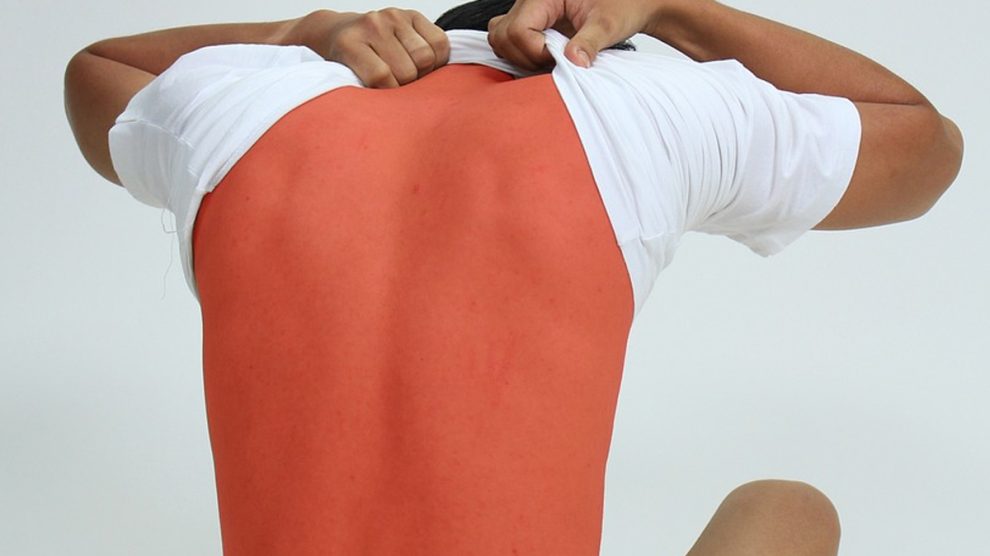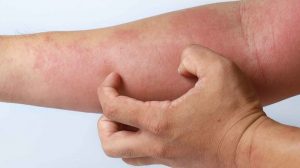Burns are a condition that arises due to exposure to moderate to high-temperature heat to the skin of the body.
Burns Understanding
Burns are a condition that arises due to exposure to moderate to high-temperature heat to the skin of the body. Burns can occur from a variety of sources, including sunlight, chemicals, electricity, or fire.
Burns can be very painful, causing red and peeling skin, sores, swelling, and skin discoloration. The pain that is felt is not always directly proportional to the severity of the burn. This is because a high-severity burn may no longer be painful.
Burns Reason
Burns can result from a variety of causes, including:
- Fire
- Hot liquid or steam
- Iron, glass, or hot objects
- Electric current
- Radiation from X-rays or radiation therapy to treat cancer
- Direct sunlight or artificial ultraviolet (UV) rays
- Chemicals such as strong acids, gasoline, or paint thinner
Burns Symptom
Based on the degree of severity of burns, there are three classifications of burns:
- First-degree burns. In this condition, only the epidermis or the outer layer of the skin is affected. May cause redness, swelling, and pain.
Generally, first-degree burns can be treated with initial treatment at home or in the emergency room/Puskesmas. With proper treatment, the burn should subside in a few days to a week. Sunburns are a classic example of first-degree burns. - Second-degree burns. In this condition, the impact of burns can be seen on the epidermis and part or all of the dermis (the inner layer of skin that is under the epidermis).
Second-degree burns can appear as reddish or white skin, accompanied by blisters, swelling, and pain. Burns that occur often appear wet or moist. Deep second-degree burns can cause scars.
- Third-degree burns. In addition to the epidermis and dermis, in this heaviest condition, the fatty tissue under the skin is also affected. The burned area can be black like charcoal or white. The skin can appear waxy or rough.
Third-degree burns can damage the nerves of the body, which causes numbness. Someone who has this type of burn has the potential to experience difficulty breathing due to inhaling smoke or carbon monoxide poisoning.
Burns Diagnosis
Diagnosis of burns can generally be established through medical interviews and direct physical examination. When carrying out a physical examination the doctor will evaluate the skin affected by the burn and determine the total body surface area affected.
Roughly speaking, a skin surface the size of the palm of the hand is considered to be approximately 1% of the total body surface area. For those aged 10-40 years, the American Burn Association stipulates that severe burns are burns that cover more than 25% of the total body surface area, or types of burns that affect the areas of the eyes, ears, face, hands, feet or groin. .
This physical examination is also carried out to determine the presence of other forms of injury that occur together with burns. While supporting examinations that can be carried out usually include laboratory tests and imaging.
Burns Treatment
If a burn occurs, some of the initial treatments that can be done are:
- Stop exposure immediately, which means keeping the patient away from the chemical or flame that started the fire.
- Remove all clothing or jewelry around the burned skin area. Be careful, you don’t need to try to remove anything stuck to the burned skin, because it will cause pain.
- Cool the burn under running water at room temperature for 20 minutes immediately after the injury. Do not use ice, ice water, cream or oily substances such as butter.
- Warm the injured person. Use blankets or thick layers of clothing. But avoid the injured part. Keeping the patient warm can prevent hypothermia, which is a condition where the human body temperature is below 35°C.
- If there is an injury to the facial area, try to keep the injured patient in a sitting position. This can help reduce any swelling that may occur.
- Immediately consult the nearest health facility to get a further evaluation to determine the most appropriate burn treatment.
Treatment for burns depends on the type and extent of the injury. For burns that are quite severe, after receiving initial treatment, the patient must then receive treatment, wound closure, therapy, and surgery.
The goals of treating burns are to treat pain, remove dead tissue, prevent infection, minimize scar tissue, restore bodily functions, and review the emotional needs of sufferers who have suffered burns. Depending on the degree of severity, treatment of burns can be done on an inpatient or outpatient basis.
People who have burns also need additional fluids which can be given by intravenous infusion to prevent dehydration. Apart from that, you also need painkillers to reduce pain, antibiotics to inhibit further infection, drugs in the form of creams or ointments, proper wound covers or dressings to keep moisture and support the healing process of burns. Reconstructive surgery is needed to remove dead tissue and replace skin injured by burns.
Burns Prevention
One of the important things that can be done to prevent burns is to know the things that are at risk of causing a fire both at home and at work. Especially when you work in an environment with fire, chemicals, or heated materials.
To minimize the risk of burns occurring around the household, there are several things that can be done:
- Avoid leaving food on the stove unattended.
- Keep hot liquids out of reach of children or pets.
- Place electronic equipment away from water sources.
- Check the temperature of food before serving it to children.
- Avoid wearing flammable clothing while cooking
- Keep heat sources such as stoves, cooking utensils, stoves, etc. out of reach of children.
- Unplug electronic devices such as irons when not in use.
- Avoid smoking inside the house.
- Check fire smoke detectors regularly.
- Keep a fire extinguisher at home.
- Keep chemicals and matches out of reach of children.
- Check the temperature of the bath water before bathing the child.












Add Comment